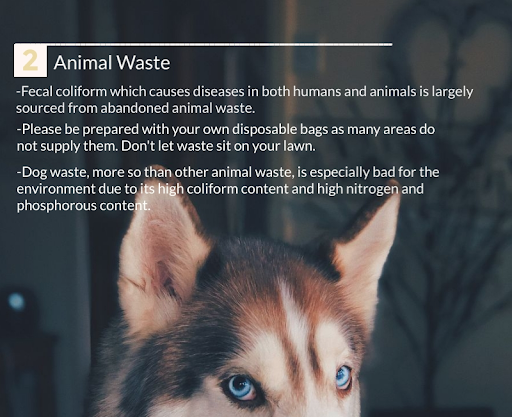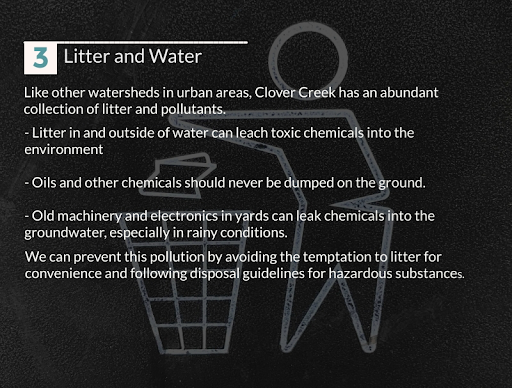By: Aminda Cheney-Irgens, Gretchen Johnson, Henry Kouba, and Jack Mahr
As a resident and/or property owner in a watershed or near a body of water, you may be asking yourself, how do my actions impact the watershed and community around me? We have created this blog post to help you understand how you can impact and improve the safety of the watershed and community around you.
First, take a look at the three pictures below. These were all taken at different sampling points in Clover Creek! Take note of the differences in these pictures. Pay special attention to the riparian zones*, water flow, water depth, and the path the water takes.
*Riparian Zone: area where water meets land at the edge of the creek.
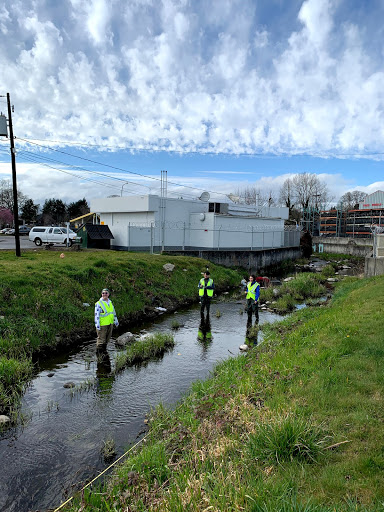
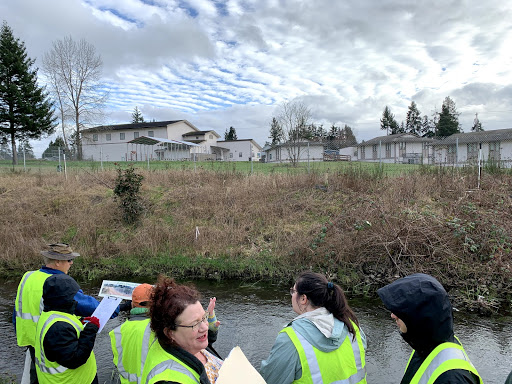
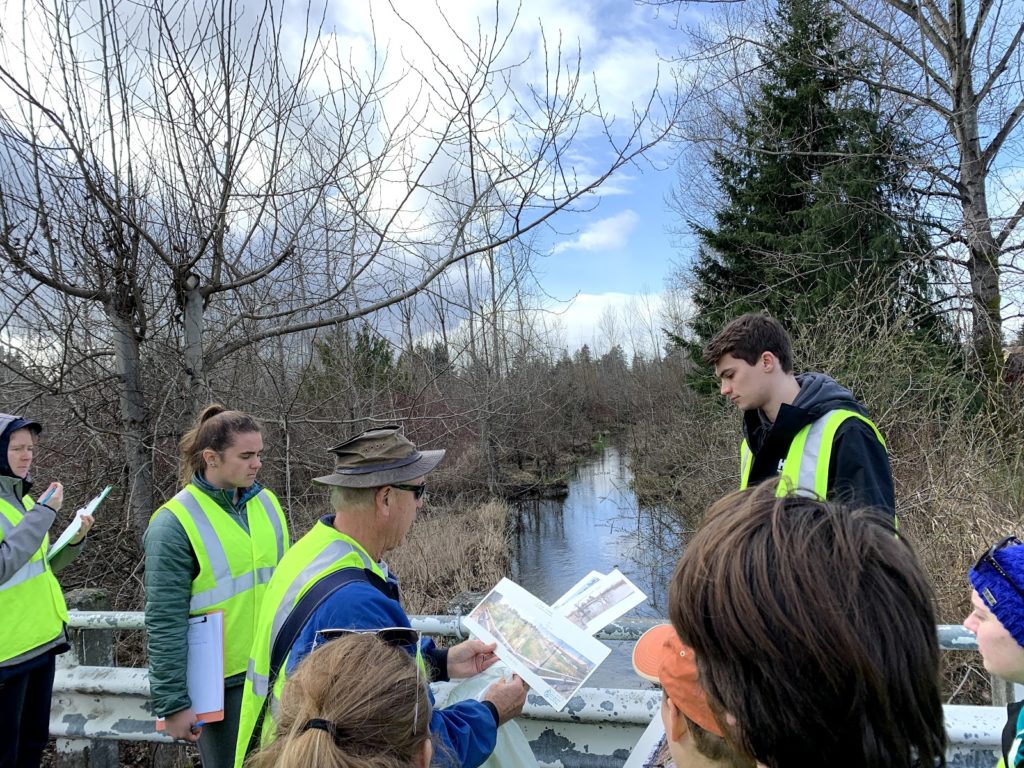
Differences that you can SEE:
- Plants: seems to be more plant variety in riparian zones as you go from the top photo to the bottom photo. The top photo has mostly common grasses you would find in your lawn. The middle photo has some more wild grasses and tree saplings, while the bottom photo has a wide variety of grasses, bushes, and trees.
- Water depth: appears to increase from top to bottom. The water barely covers the peoples’ shoes in the top photo, where the water in the bottom photo is too deep to casually stand in.
- Rate of water flow: seems to decrease from top to bottom. Notice how the water surface in the top photo is rippling, and how smooth it is in the bottom photo.
Differences that you CAN’T see:
- Chemicals: as you will see later on, chemicals found in everyday household items, such as nitrates and phosphates in fertilizers, can be harmful to watershed ecosystems at high concentrations.
- Water pollution: this can include runoff from storm drains, sewage treatment plants, and industrial plants.
- Macroinvertebrates and fish: macroinvertebrates are small animals without backbones; they include insects and shellfish. These organisms, along with fish, are very sensitive to water quality and will be plentiful in healthy streams, but difficult to find in streams with high chemical and pollution levels.
So what are some telltale signs of a healthy watershed?
Healthy watersheds have lots of different plants in riparian zones, which provides shade and prevents flooding and erosion. Stream paths that meander (as opposed to flowing in a straight line) create different rates of water flow throughout the stream, including calm, cool pools for fish to rest in as they move upstream. Healthy watersheds have low levels of chemicals that could be harmful to wildlife and plants. And finally, healthy watersheds have water flowing where water should be! An obvious indicator of an unhealthy watershed is a dried up water canal.
For more information on watershed health and how you can get involved with your local watershed, check out this online Streamkeeper’s Handbook and the Chambers-Clover Creek Watershed Council website.
Below, we will show you how your everyday actions can affect your local watershed and community, and how you can help improve the health of your watershed!

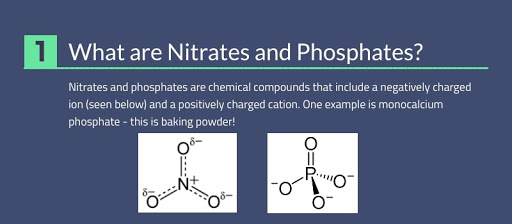
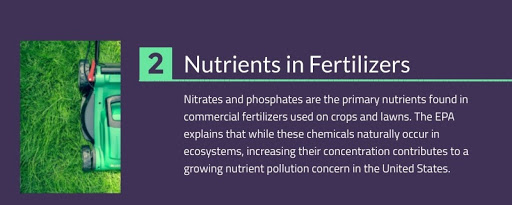
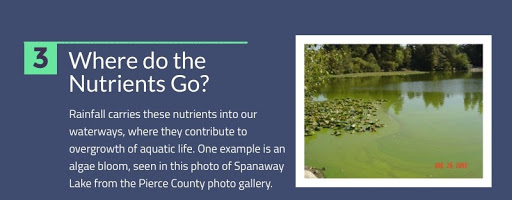
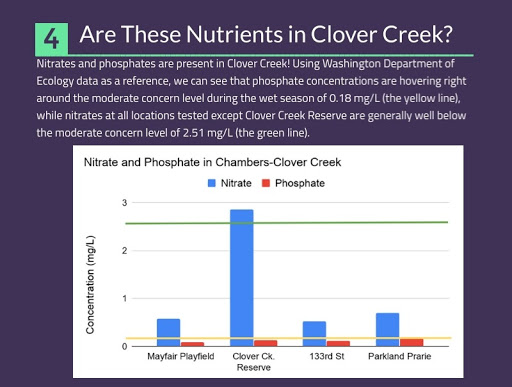
Other Resources to Learn More:


